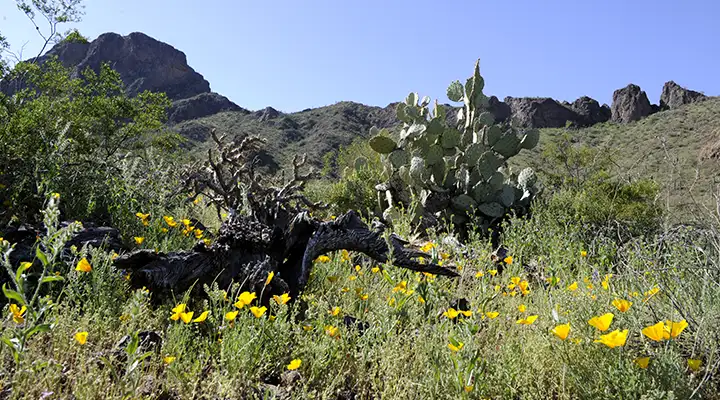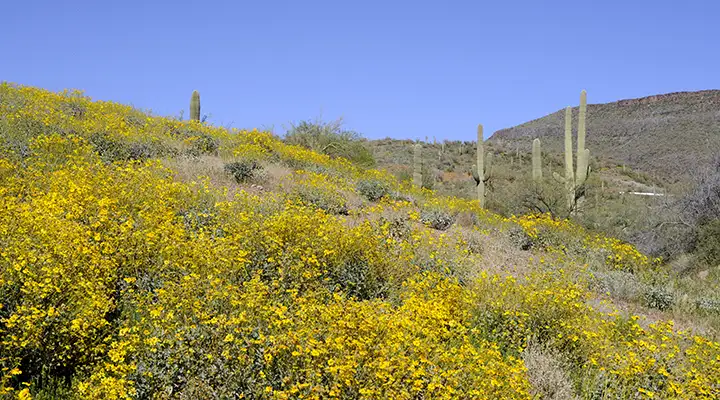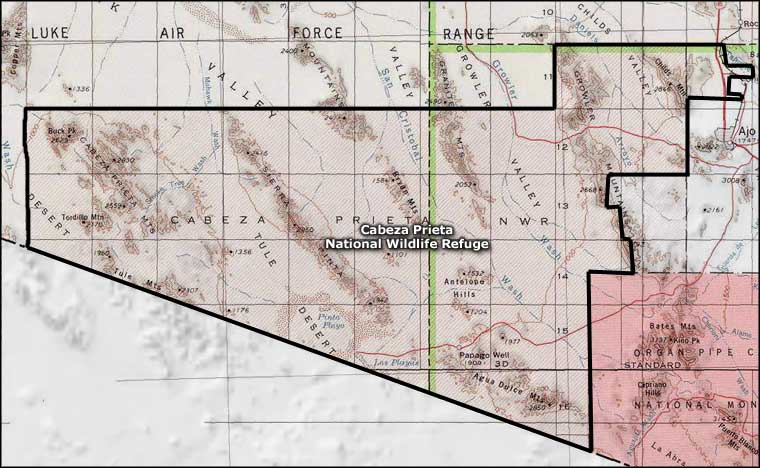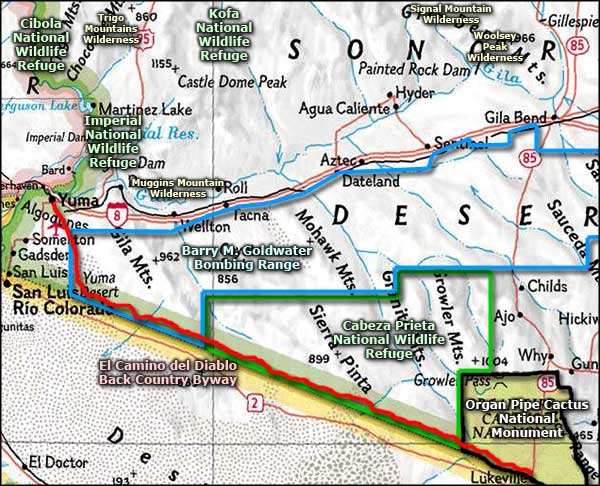Cabeza Prieta National Wildlife Refuge

Typical landscape at Cabeza Prieta National Wildlife Refuge

Cabeza Prieta is Spanish for "black head." The name refers to a black lava-topped granite peak in the remote western corner of Cabeza Prieta National Wildlife Refuge. With 860,010 acres of Sonoran desert, Cabeza Prieta is the third largest National Wildlife Refuge in the 48 contiguous states. And just because it's Sonoran desert doesn't mean it's a barren place: there are more than 400 plant species and more than 300 animal species living on this property.
Sonoran desert rainfall patterns tend to stimulate the growth of lots of plants. On this property you'll find mesquite, palo verde, creosote bush, bursage and ironweed. There's also cacti (cholla, saguaro and ocotillo prominent among them) everywhere. A lot of plants means a lot of food for the animals that live here. Animals like desert bighorn sheep, rattlesnakes, kangaroo mice, lizards, coyotes and desert tortoises. This property is also home to endangered species like the Sonora pronghorn and lesser long-nosed bat. Gila woodpeckers work over the saguaros for bugs, and then elf owls move into and nest in the holes the woodpeckers create.
Most folks visit Cabeza Prieta NWR between November and March, because from June through October, temperatures will top out above 90 and 100°F every day. It's not an easy place to visit even when it's cooler out. There are seven rugged mountain ranges on the property. In between are wide, sandy bajadas and sometimes deep, dry arroyos. I say dry but in the rainy season (which is when it's cooler), those arroyos can be very dangerous with flash floods. As 803,418 acres of the place were designated wilderness back in 1990, driving around isn't much of an option anyway. However, nearly everywhere you go on the NWR and wilderness area, you're going to come across junk vehicles, burned areas, refuse piles and maybe even a few bodies as this property sits right against the Mexican border and is heavily used for the smuggling of illegal materials and aliens in both directions.
El Camino del Diablo is a historic route across the refuge that parallels the border. Technically, the unmaintained road is outside the designated wilderness but the "no man's land" around that border extends for more than a few miles north of there.
If you should decide to go for a drive on Cabeza Prieta, it is highly recommended that you take extra food and water and even a couple spare tires. Having a problem on this property can quickly become life-threatening.
My wife and I went camping at Organ Pipe in the early 1990s. Very little was open for us to camp at and that area was very crowded. The situation was such that we packed early the next morning and only saw what we could get to easily on our way back north. I'd been to Cabeza Prieta once in the late 1960s and really wanted to go deeper in but we were warned off at every stop. Gotta love that border.

A desert bighorn sheep at Cabeza Prieta NWR

Typical Sonoran Desert landscape at Cabeza Prieta National Wildlife Refuge

Cabeza Prieta National Wildlife Refuge sign on El Camino del Diablo

Photo of the desert bighorn sheep courtesy of Flickr userid PhillipC, CCA 2.0 License
Photo of sign on El Camino del Diablo courtesy of Dan Sorenson, CCA-by-SA 3.0 License
Other photos courtesy of John & Karen Hollingsworth, US Fish & Wildlife Service
Map courtesy of National Geographic Topo!

Related Pages
Cibola National Wildlife Refuge
El Camino del Diablo Backcountry Byway